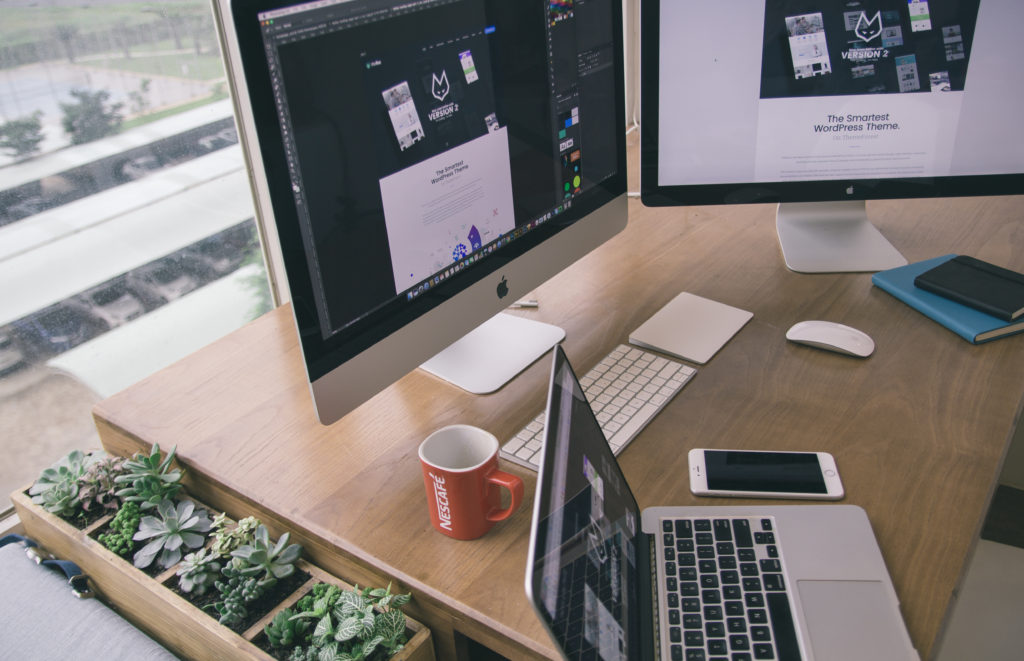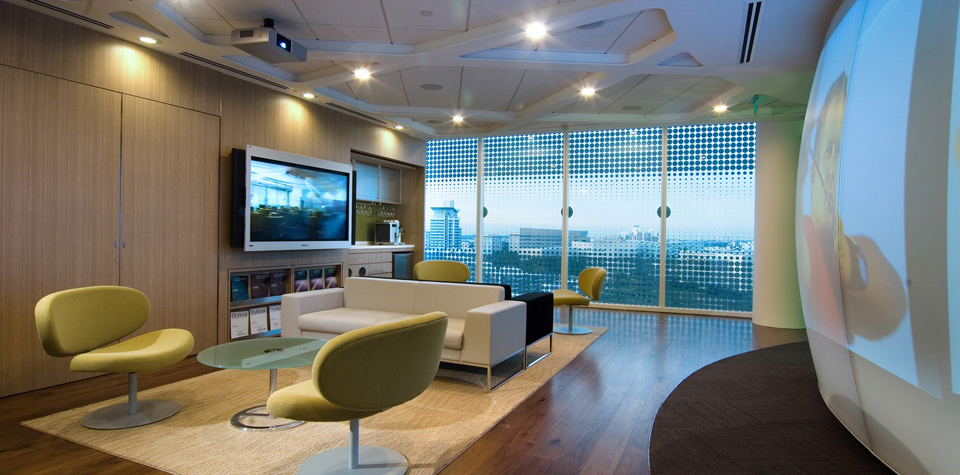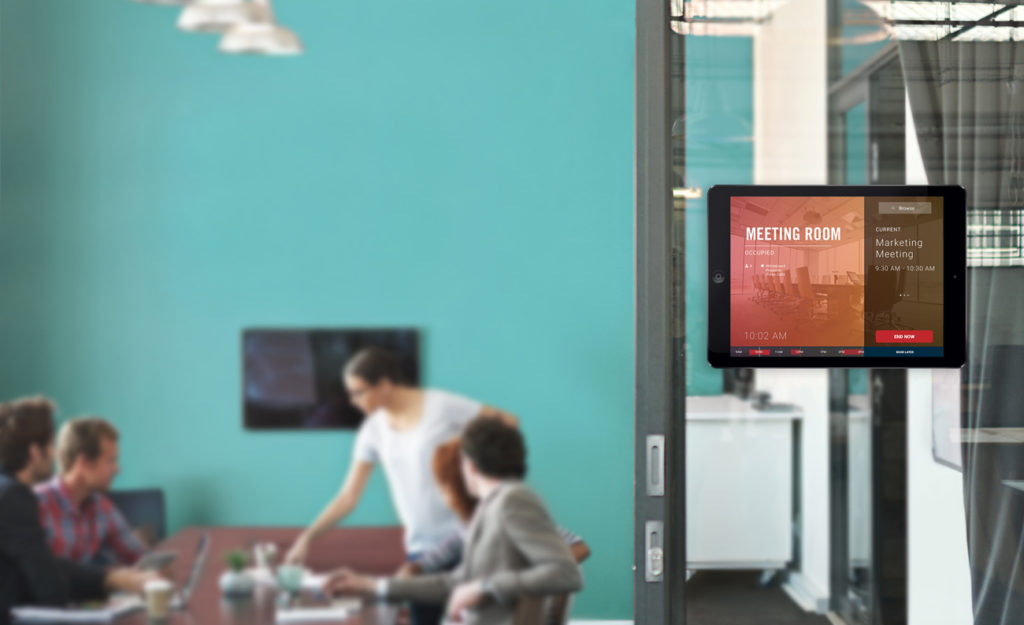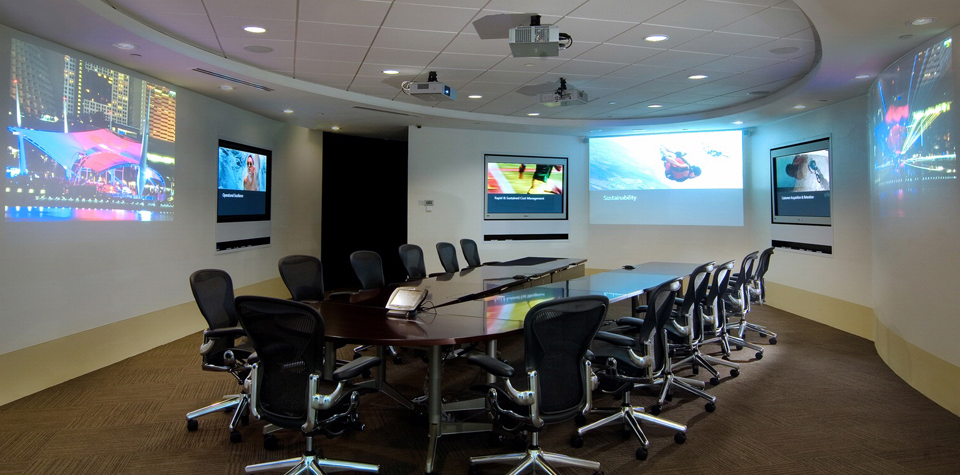Pictured above: Accenture’s Singapore Innovation Centre (Photo: HOK)
USING TECHNOLOGY TO ADAPT TO A MOBILE WORKFORCE
Facility Managers are looking to be seen as more than a cost centre within an organization and join the executive conversation on workplace strategy. The role of the Facility Manager is evolving, and requires FMs to create strong workplace culture, insert themselves into the right strategic conversations and approach issues from different viewpoints. Along with this, technology plays an increasingly important part in the Facility Manager role.
Technology has been at the heart of many changes in the workplace. These changes have caused disruptions that transcend office boardrooms. More than anything, workplace technology has provided an unprecedented level of mobility for the modern office worker.
MOBILITY: WORKPLACE TECHNOLOGY CATCHING UP

Workplaces are being re-engineered to reflect the way digital work and collaboration happens. Employees no longer need to be physically present in the office to carry out their work.
Yet, workplace technology lags behind how employees expect to work. Remote work and flexible work arrangements like agile programs have grown significantly. But technology in the average office is still fairly stagnant and can barely support the growing number of flexible workers. Furthermore, employees are now routinely exposed to the latest and greatest consumer technology. This makes the lack of workplace technology glaringly obvious.
Workplace technology is a double edged sword that provides both challenges and solutions. Creating solutions requires true collaboration at the C-suite. Facility Managers looking to create results must work with various departments within their firm. The introduction of workplace technology ties in multiple aspects of the workplace strategy conversation. Understanding different departmental challenges and issues is just one way that this happens.
WORKPLACE TECHNOLOGY: WHAT YOU NEED TO KNOW

Accenture’s Singapore Innovation Centre, Designed by HOK (Photo: HOK)
With workplace technology providing huge opportunities for Facility Managers, we look at the most compelling use cases.
ADVANCED COLLABORATIVE CONFERENCING EQUIPMENT
With increasingly flexible workplace arrangements, conferencing equipment becomes more important. New technology must allow these remote employees to engage meaningfully with coworkers physically present within the office. For example, Steelcase is working to create better “presence” for conference calling. It allows those not physically in the room to be more engaged in conversations. Haworth is another furniture giant that has undertaken efforts for better digital collaboration. They have embedded collaborative technology into design through their BlueScape Series.
Facility Managers should consider several conference rooms of varying sizes to accommodate different groups, and even private conference booths.
WIRELESS CHARGING STATIONS
The increasingly mobile worker might use the office as a pitstop and a place to refresh. Wireless charging helps the mobile employee stay charged and connected, and productive while on the road.
SENSOR TECHNOLOGY
In a digital workplace, sensors provide valuable data that allow organizations to function better. For example, FMs can use sensor data to optimize space for the workforce. This is done based on usage and interaction data. Additional benefits around efficiency also exist. For example, occupancy sensors can dim or turn off lights, resulting in large energy reductions. The opportunity to leverage sensor data is huge for FMs. View the implications for satisfaction and productivity in our White Paper: Unlocking Employee Productivity With Sensor Technology.
ROOM-BOOKING SOFTWARE

Mobile workforces still need to meet, sometimes more frequently than others. Workers may be in and out of the office for meetings with clients and their own teams throughout the day. A mobile workforce room booking software makes managing these sought after spaces easier.
The software should integrate with other aspects of your office such as sensor technology. Coupling sensor data with room booking software can help illuminate room reservation no-shows for example.
SMART HVAC AND LIGHTING CONTROLS
There had traditionally been barriers to this type of technology due to infrastructure restrictions. However, the push for smart buildings has seen many companies create new technology designed for retrofit applications. Examples include Phillips LuxSpace PoE LED lights, employing power over Ethernet. Using this type of technology, workers can control lighting in the areas they need. Individually controlled lighting creates energy savings for mobile workers by only using what is necessary. Additionally, Employees can determine their own preferred lighting levels.
Along with this necessary infrastructure side come apps like Comfy. Applications like this can allow workers to adjust the temperature to their desired comfort for productivity.
Facility Managers have control when it comes to projects like this and should consider collaboration with IT and also their Corporate Real Estate Groups for larger role outs.
IMPLEMENTING WORKPLACE TECHNOLOGY: COLLABORATING WITHIN YOUR ORGANIZATION
Depending on the application, different silos within the C-suite will be involved. Functional workplace technology often impacts both Human Resources and Management Information Systems (IT). A greater level of collaboration between Facilities, IT and HR will be required to re-engineer the workplace to reflect changing work environments,. It is crucial to involve these stakeholders and build consensus to drive towards success of the project.
Driving changes in workplace technology to reflect mobility will be hard work. But shaping the future of the workplace was never meant to be easy.

